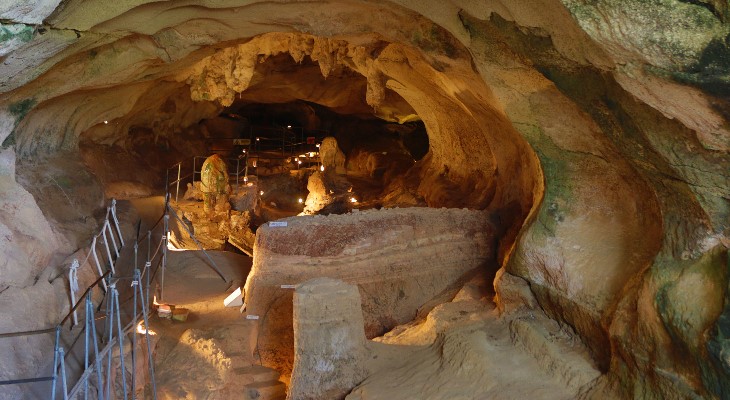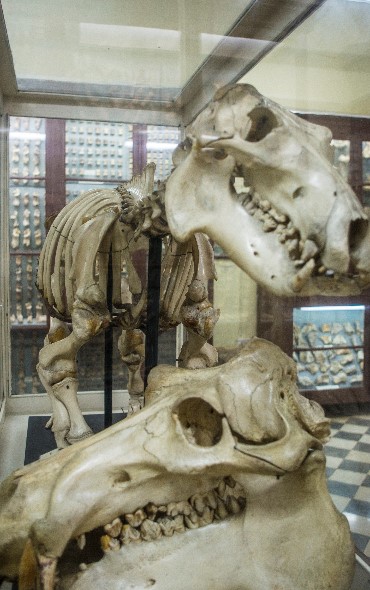Malta is considered old in terms of its 7,000 years of history, yet when considered on the geological timeline, it's actually quite new!

Aaron Briffa - viewingmalta.com
Somewhere during the Tertiary period, which began 65 million years ago, the sedimentary rock on which the Maltese Islands are situated was formed under the sea. However, it wasn't until the Oligocene and Miocene epochs (33.9 million to 5.3 million years ago) that the sea levels dropped and this rock was exposed to the atmosphere. This means that, in terms of geological time, Malta is actually relatively new!
Fast forward to about 180,000 years ago (the Middle Paleolithic period) and Malta would have been a very different place to what we know now. To start with, the Maltese archipelago wasn't one, and the islands were all part of the same land mass, which was part of Sicily and linked to mainland Europe by a land bridge.
The vegetation was lush, and dwarf elephants, deer and bears roamed the land, while hippopotamuses and giant flightless swans lazed in the waters.

Aaron Briffa - viewingmalta.com
Archaeologist Professor Anthony Bonanno says, "Dwarf elephants are an example of the phenomenon whereby large terrestrial vertebrates (usually mammals) that colonise islands evolve into dwarf forms. This would be due to the environment being somewhat resource-poor for them, and their need to adapt to it."
During low sea levels, the Mediterranean islands were colonised again and again, giving rise, sometimes on the same island, to several species (or subspecies) of different body sizes. As the Ice Age came to an end, sea levels rose, stranding elephants on the island. The island of Sicily appears to have been colonised by elephants in at least three separate waves of colonisation.
The hippopotamuses only became extinct about 10,000 years ago, whilst the deer species became extinct much later, about 4,000 years ago. Bone remains from these animals, as well as the elephants, were found in Malta at Ghar Dalam - the prehistoric cul-de-sac located in the outskirts of Birzebbuga. It's also here that the earliest evidence of human settlement on Malta (some 7,400 years ago) was discovered.
The cave is about 144 metres deep, with the first 50 metres accessible to visitors. It was first scientifically investigated in 1885, and opened to the public in 1933. It was used as an air raid shelter during WWII and a museum was set up on site. In 1980, some relics were stolen, including four tusks from dwarf elephants and the skull of a Neolithic child. In 1987, a team of Italian archaeologists discovered Palaeolithic cave art depicting human hands, anthropozoomorphic, and several animal designs from underneath the stalagmatic formations. Unfortunately, most of these finds were recently destroyed due to vandalism.
Situated at the entrance to the whole site, the museum still exhibits a remarkable wealth of finds from animal bones to human artefacts.
Today it's hard to imagine green, lush vegetation with such large animals roaming the land on these small, highly populated and arid islands. But a visit to the Ghar Dalam Cave and Museum will help you imagine Malta during a time without humans, when the land was serene and vast, to picture what it was like, in the beginning.